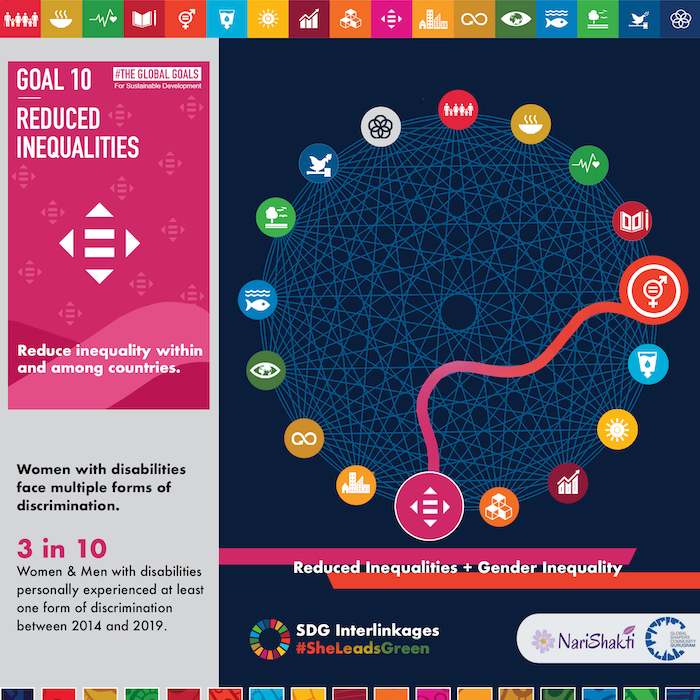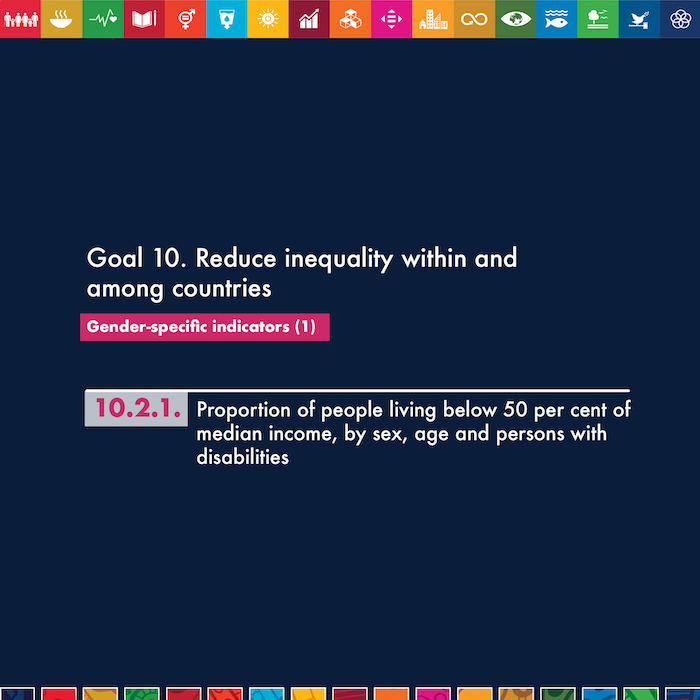
Gender parity for reducing inequalities (SDG 10)

Why do we need to look at reducing inequalities from a gender lens?
- Globally women earn 24% less than men, with varied gaps between countries.
- They are also more likely than men to be in vulnerable employment, with up to 75% of women’s jobs being informal or unprotected in developing countries.
- Worldwide, 83% of domestic workers are women with most not legally entitled to a minimum wage.
How is reduced inequalities and gender-linked?
There are 10 targets and 14 indicators to achieve SDG 10. Only 1 out of 14 indicators are gender-specific.

- SDG 10 recognizes the linked objectives of gender and social equity in target 10.1 (accelerated income growth for the poorest); target 10.3 (equal opportunities); and target 10.4 (to support greater equality).
- Acute impact of income inequality falls on women who are already disadvantaged. With less income and fewer assets than men, women, particularly single-mother households, are more likely to live below 50% of median income.
- Evidence suggests that inequality between women and men in a household is a strong contributing factor to overall income inequality in society.
- The poorest people overall earn less when women earn less. In 2016, UN Women reported that household inequality between women and men may account for up to 30% of all income inequality.
What outcomes can we achieve in SDG 10 if we reach gender parity?
- In spite of more women being in the workforce, in politics, in leadership roles, breaking stereotypes and societal taboos, gender discrimination makes women prone to deeper disparities.
- Gender inequalities in health, education and work intersect with multiple discriminations linked to race, ethnicity, caste, religion, location, sexuality, age, class or disability.
- Social norms that treat women as second-class citizens in many cases translate into structural obstacles to progress, such as budgets that do not fund the services women need most.
- Potentially unequal outcomes for women and men must be recognized in all spheres for policy making. Only then can deliberate actions be taken to correct them, within and across countries.
References


